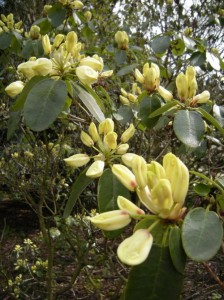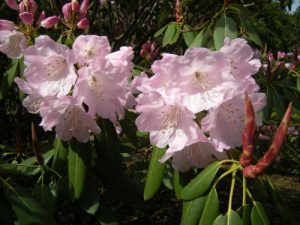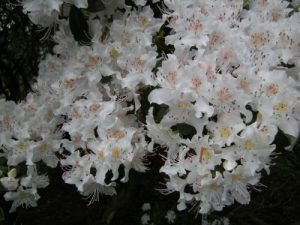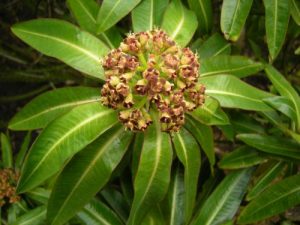The International Rhododendron Conference is taking place from 7 – 11 May 2008 at the Garden. The Royal Botanic Garden Edinburgh grows and has long been involved with the cultivation, research, classification and nomenclature of the genus Rhododendron. This is a group of plants that has an enthusiastic following, both professionally and through the garden centre trade as a plant to grow in the home garden.
The following hardy species are native to the Himalayan region where the most diverse examples of the genus grow. Collected through the centuries by dedicated plantsmen, these have enriched our garden flora with magnificent specimens.
They are now valued for reasons other than aesthetics as climate and land use change has played a part in their habitat loss. Growing within gardens throughout Scotland is well documented genetic material that can be used to reintroduce species into the wild.
- Rhododendron campylocarpum (see above) with Joseph Rock’s collection number 1A is growing near Inverleith House. The delicate clear yellow flowers are held in a terminal cluster above the evergreen rounded leaves.
- R. rigidum ssp. triflorum (seen above): a much later introduction by Rock; collection number 11288, collected at 3,050 metres in the hills around Lijiang, Yunnan Province, China.
- R. augustinii ssp. augustinii: a Wilson collection from Sichuan, China with light blue flowers, dominant mottling on the upper petal and prominent ungainly flower parts.
- R. fortunei ssp. fortunei: the new growth shoots up in a spear, shedding protective red bracts as the leaves expand. Older wood is covered in large pink fragrant blooms.
But you cannot just garden with rhododendrons. Take a moment to appreciate the honey-laden scent given off by the flowers of Euphorbia mellifera as you enter by the North Gate.





